Drawing Animals and People From Life
What might seem cute or amusing to you is a terrifying reality for them. They are poked, prodded, tied, starved, drugged, and kept in small enclosures, just so that "animal lovers" can see them up close or watch them perform tricks. We see these animals on movie screens, in zoos, at marine parks, rodeos, racetracks, and circuses. We spend millions of dollars each year supporting the industries that hold our favorite animals captive. Trainers put their heads in the mouths of lions or ride on the backs of dolphins. The crowds erupt with joy, not realizing the hidden cruelties they are supporting.
Animals have been used as a source of entertainment for thousands of years, but does that mean we should continue forcing them to suffer so that we can enjoy looking at them behind glass walls or in arenas?
History of Animal-Based Entertainment
Humans have been fascinated with animals for most, if not all, of our history. Rulers in Egypt, China, and Rome would collect exotic animals as symbols of power and wealth. Their allies gave them animals as gifts. These animals included elephants, bears, giraffes, and large cats. Greeks were among the first to capture animals for educational purposes, while the Romans would force wild animals, often provoked by gladiators, to fight to the death inside large arenas for the entertainment of crowds.
In the Middle Ages, dog and cockfighting also became popular, along with bull and bear-baiting. Around the same time, explorers would capture exotic animals and put them in cages or pits for people to observe. These enclosures were known as "menageries." Once entrepreneurs realized how profitable these menageries were, they would take wild animals on the road to make money, creating what many of us know as traveling circuses.
Zoos date back to the Aztec Empire and later spread to France, Spain, and Austria in the 18th century. The first American zoo was opened for public visits in the late 19th century in Philadelphia.
Trained animal performances were also popularized in the 19th century by individuals like Henri Martin in France and Isaac Van Amburgh in America. It is believed that Van Amburgh was the first to successfully shock a crowd by putting his head inside a lion's mouth. Van Amburgh also trained a lion to lie with a lamb in harmony, which was another shocking sight at the time.
Most trained acts involving predatory animals thrived (and often still do) on the potential for danger. Trainers would include whips and chairs in their act for dramatic effect. To perform these thrilling acts, trainers first gain dominance over the animal behind the scenes. The most popular ways to "gain dominance" are by beating, starving, whipping, or even pulling an animal's teeth to reduce the likelihood of injury to the trainer.
Once television and motion pictures were introduced to the world, animals were pushed into the spotlight differently. Countless movies have faced animal abuse claims. These include classics such as "Ben-Hur" and "The Adventures of Milo and Otis" as well as newer releases like "The Hobbit" and "Pirates of the Caribbean: The Curse of the Black Pearl."
Animals are still abused in most of the aforementioned ways to this day. Most of us are fascinated by animals, but that does not mean we should hold them captive so we can admire their beauty. We should push for reform in these industries because we love animals and want them to live happy lives, free from suffering.
Which Animals Are Used In Entertainment and Why?
Many species of animals are used in circuses, zoos, movies, exotic animal encounters, and other forms of entertainment. You can find tigers, lions, bears, sloths, elephants, fish, whales, dolphins, dogs, cats, monkeys, donkeys, horses, giraffes, and camels within the entertainment sector.
As mentioned above, the tradition of capturing and caging wild animals dates back thousands of years, to rulers that used animals as a status symbol. Over time animals have also been bred in captivity to perform for humans.
Restriction Of Natural Behavior and its Consequences
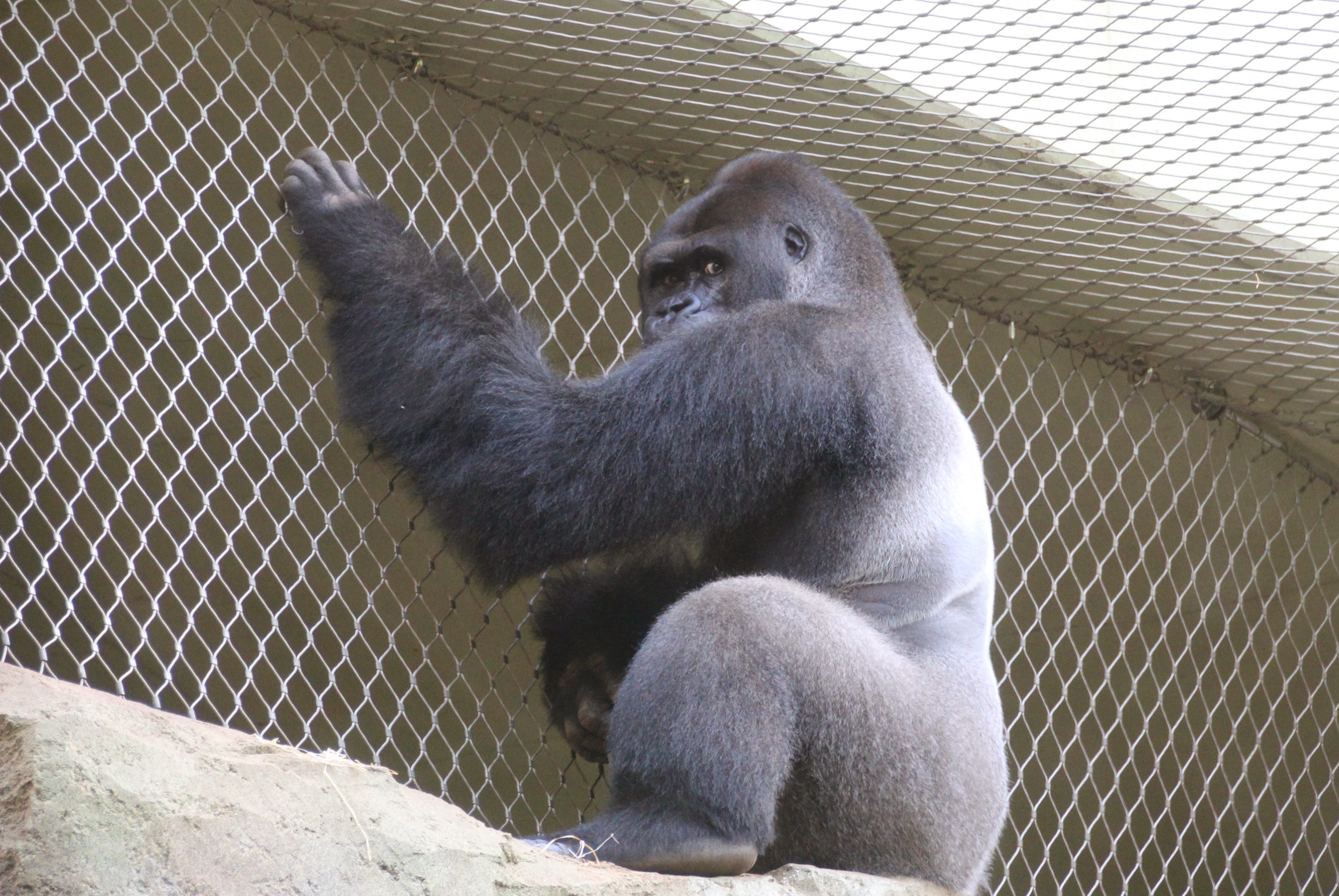
Keeping wild animals in captivity is usually a dangerous idea. Many incidents related to wild animals could have been prevented if the animals were not kept as pets, performers, or exhibits.
All too often animals attack their trainers in circuses and other live shows. Wild animals are unpredictable. If they are startled, stressed, or enraged by something, there is not much a human can do to stop them from attacking.
The tragic death of Harambe at the Cincinnati Zoo in 2016 is an example of a wild animal being killed for exhibiting their instinctual urges. A young boy fell into the gorilla enclosure and was dragged by Harambe, a 17-year-old western lowland gorilla. At first, it seemed that Harambe was helping the boy up from the water he fell into until he was startled by the screams of zoo guests. Once alarmed, he dragged the boy to another part of the enclosure. Harambe was then shot dead in an attempt to rescue the boy before he was mauled.
Another horrific incident occurred at SeaWorld in Orlando in 2010. Dawn Brancheau was an orca trainer who spent much of her time with the animals. Tilikum, also known as Tilly, was a killer whale who was caught from the wild in Iceland in 1983 when he was just two years old. In February of 2010 Dawn was interacting with the orca as usual when Tilikum dragged Dawn into his tank and killed her. He had spent his entire adult life in captivity and had actually drowned two other people before Dawn's death — another trainer in 1991 and a trespasser in 1999.
These incidents are incredibly unfortunate for the humans involved, and they are just as tragic for the animals, who never asked to be put in these situations. These animals never had a chance at a normal life.
What About Zoos?
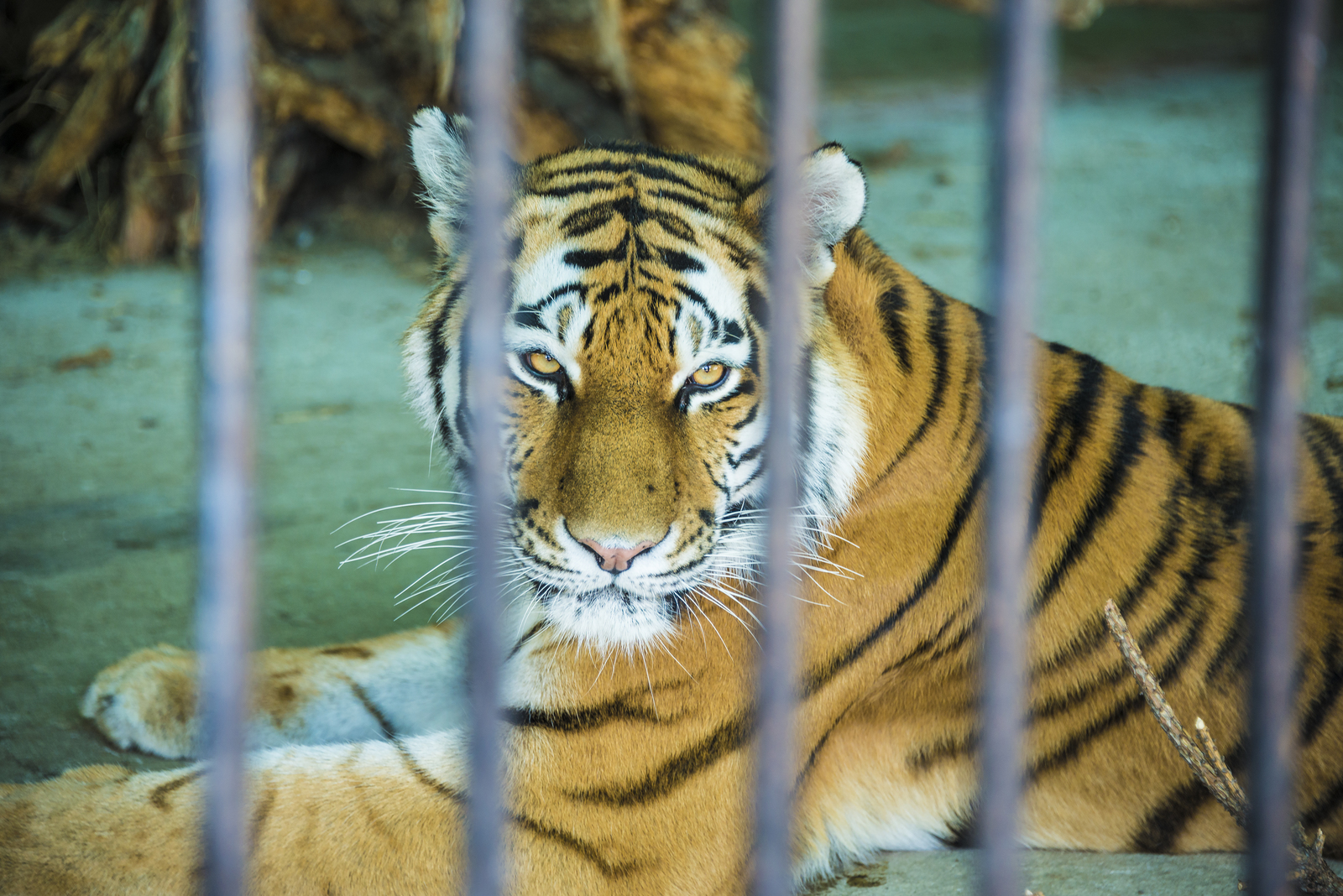
There are many conflicting views about the potential of zoos. Some believe that if they are run properly, if enough space is provided for animals to roam, and if enrichment exercises are available, then zoos can help rehabilitate injured animals or keep endangered species alive. Others believe that no animal should be kept in captivity — period. Many animal activists will not support zoos for this reason.
Animals in captivity are unable to fully exhibit natural tendencies like foraging, socializing, or swimming. Many animals such as polar bears, grizzly bears, and tigers suffer physically and psychologically when confined. Animals — especially large animals — need adequate space to roam, swim and explore.
Some people believe that zoos rehabilitate animals and safely release them back into the wild, but this is often not the case. One study found that only around 33 percent of large, captive-bred carnivores released back into the wild survive. When bred in captivity or kept for an extended period of time, animals do not possess all the necessary hunting and foraging skills to survive independently. Is it ethical to keep endangered animals in captivity simply so that they continue to exist, without living a natural life? Or so that humans can watch them behind glass walls? Many would say no.
Aside from large zoos, privately-owned zoos and exotic animal encounters are other areas of ethical concern. Investigations have found emaciated animals, dead and decaying animals, and psychologically distraught animals in zoos, including exotic petting zoos around the world. A 2016 Four-Paws rescue mission saved 15 animals from certain death at a place known as "the world's worst zoo" in Palestine. Animals were starving, neglected, and dying. Fortunately, this zoo was shut down after Four-Paws rescued the animals.
Yet zoos like this still exist around the world. They will continue to stay in business as long as people continue buying tickets. The best way to help animals within these horrific environments is to stop supporting establishments that keep animals in captivity.
Undercover Investigations Of Animal Cruelty
Industries that use animals as a source of entertainment try hard to keep cruelty hidden beneath the surface. There is no money in showing people the truth. They want the crowd to be dazzled without thinking too deeply about how or why the animals are acting a certain way. When animals are exploited for human profit, cruelty is never far behind.
Ringling Bros. Circus
People for the Ethical Treatment of Animals (PETA) has conducted multiple undercover investigations of circuses like Ringling Bros., Shrine, and Carson and Barnes. The following video is of a 2009 PETA investigation of Ringling Bros. and Barnum & Bailey Circus, eight years before it permanently closed.
Elephants and tigers are hit in the face, ears, and bodies with bullhooks and batons while simply standing still or exhibiting instinctual behaviors.
Unfortunately, these violent acts are not isolated incidents within just one circus, they are common practice around the world.
SeaWorld
Another repeat offender of cruelty is SeaWorld. People used to flock to SeaWorld to watch whales and dolphins perform, but the veil was soon lifted with the release of the documentary "Blackfish."
Viewers were furious after watching the film. It was hard to believe the pain that marine animals endure for human profit. Animals were removed from the wild just to be kept in small tanks, and any semblance of normal life was ripped away.
Orcas, accustomed to swimming up to 100 miles per day, are forced to live inside tanks stretching a mere 0.07 miles at SeaWorld. It took until 2016 for SeaWorld to announce that they would stop breeding orcas in captivity and eventually end the orca shows. Orcas were still being forced to perform multiple shows per day until 2017 at the California location, and up until early 2019 in Florida and Texas.
Other Cruel Spectacles
Cruelty in animal entertainment is not exclusive to one or two companies. Circuses, animal shows, races, and other forms of entertainment put animals in danger and strip them of their natural environments and behaviors.
Circuses
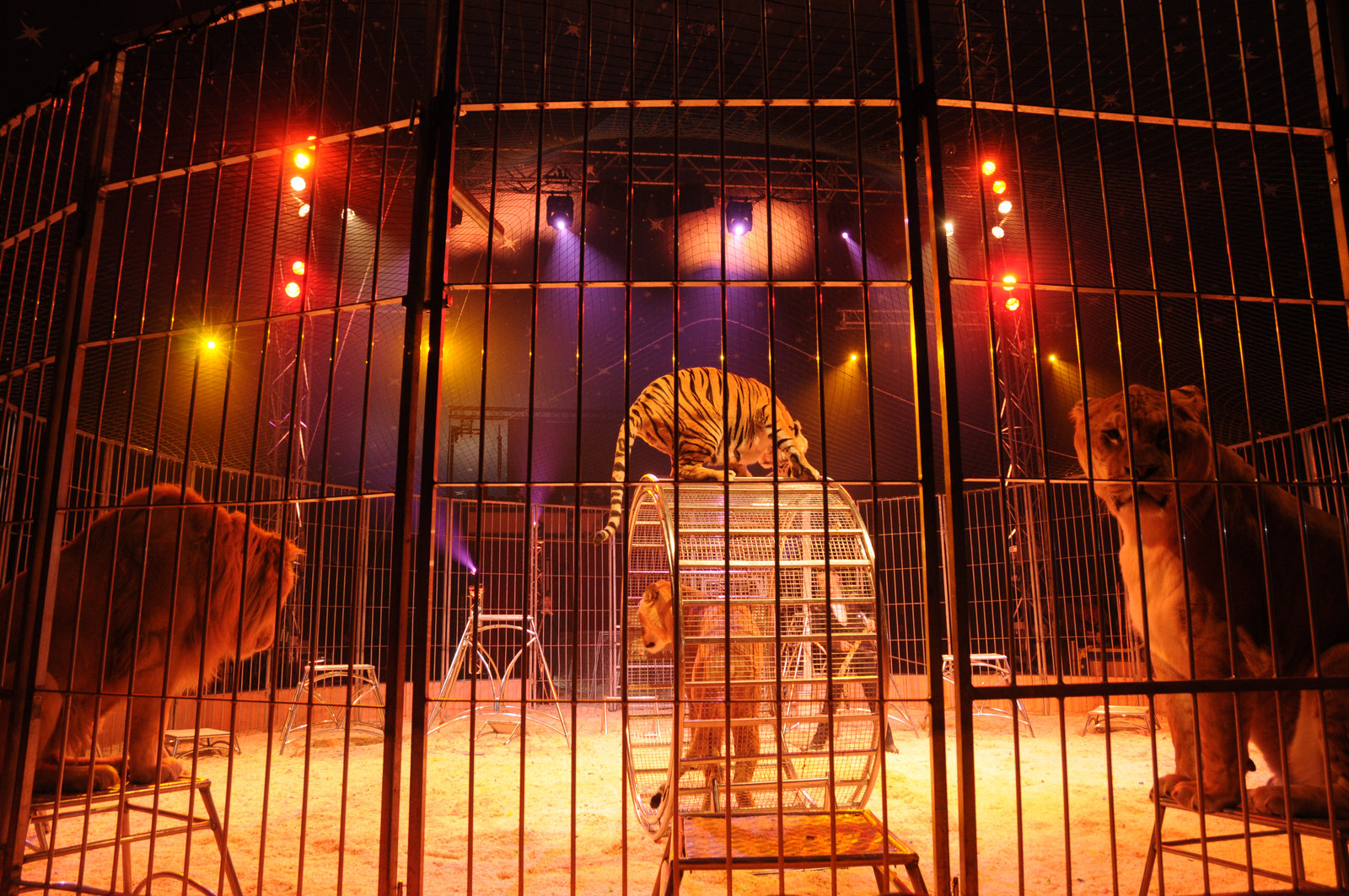
Circuses date back hundreds of years to when humans realized they could train wild animals to perform for entertainment and profit. The first modern circus in the United States was founded in 1793 in Philadelphia, Pennsylvania. The largest traveling circus was The Barnum & Bailey Greatest Show On Earth. Yet what might seem like magic on stage actually involves unnecessary cruelty to animals behind the scenes.
Circus animal trainers use whips, electrical prods, and bullhooks to get animals to perform unnatural stunts. Even in circuses where animals are treated relatively well, they are still confined for most of the day, until it is time to perform. This type of isolation is damaging to their psychological and physical health.
Animals are not given adequate time to exercise or roam as they would in the wild. Tigers, for example, have an instinctual need to roam and hunt, so being kept in captivity and forced to jump through flaming hoops alters their psyche. This is why accidents happen in circuses, zoos, and other forms of animal-based entertainment. These wild animals can only suppress their instincts for so long before a human gets hurt.
Once an animal is deemed unprofitable due to age, demeanor, or lack of trainability, they are often sold to businesses for "canned hunts." Canned hunts allow hunters to kill "exotic" animals, even though most have been in captivity for years. This disturbing activity is banned in only a handful of U.S. states. In states covered by the Endangered Species Act, some exotic animals are protected, but the laws have limited power within private facilities.
Chimpanzees are known as humans' closest relatives because we share about 99 percent of our genetic blueprint with them. These animals are not treated like humans, though. They are subjected to confinement, abuse, and psychological damage like other circus animals.
Elephants are among the most abused in circuses, both physically and emotionally. These animals are incredibly social, intelligent, and friendly, but they are denied the opportunity to express these traits while training. Elephants are hit in the face, body, and ears with bullhooks if they move too much or try to socialize, and sometimes they are hit without doing anything wrong at all.
New Jersey and Hawaii were the first U.S. states to ban exotic animals in circuses, in 2018. In 2016 California banned the use of bullhooks in circuses, and recently banned the use of most exotic animals altogether. This includes bears, tigers, and elephants, which are among the most frequently exploited animals in circus acts. Nearly 150 cities, towns, and counties in 39 states have passed similar restrictions or bans on the use of wild animals in circus acts, but there is more work to be done.
Rodeos and Bull Riding
Rodeos are a tradition originating in Spain and popular in America, involving the roping, tying, wrestling, and riding of calves, horses, and bulls. What started as a neighborly competition to see who could complete their daily farm chores faster has become a cruel source of entertainment around the world.
As you can see in this video from the ASPCA, bulls, and horses do not willingly buck — they are forced to by pain and fear.
The use of rope burning, electrical prods, brute force, testicular manipulation, and other scare tactics force these animals to react erratically while trying to escape. Instead of escaping, they are ridden by humans as part of a game to see who can ride them the longest. Calf tying is just as disturbing. Calves are lassoed, tackled, and tied, often suffering broken necks, broken limbs, damaged internal organs, or even death.
Forcing frightened animals to be part of a game is unethical and unnecessary. These activities can be replaced with animal-free alternatives like mechanical bulls.
Bullfighting
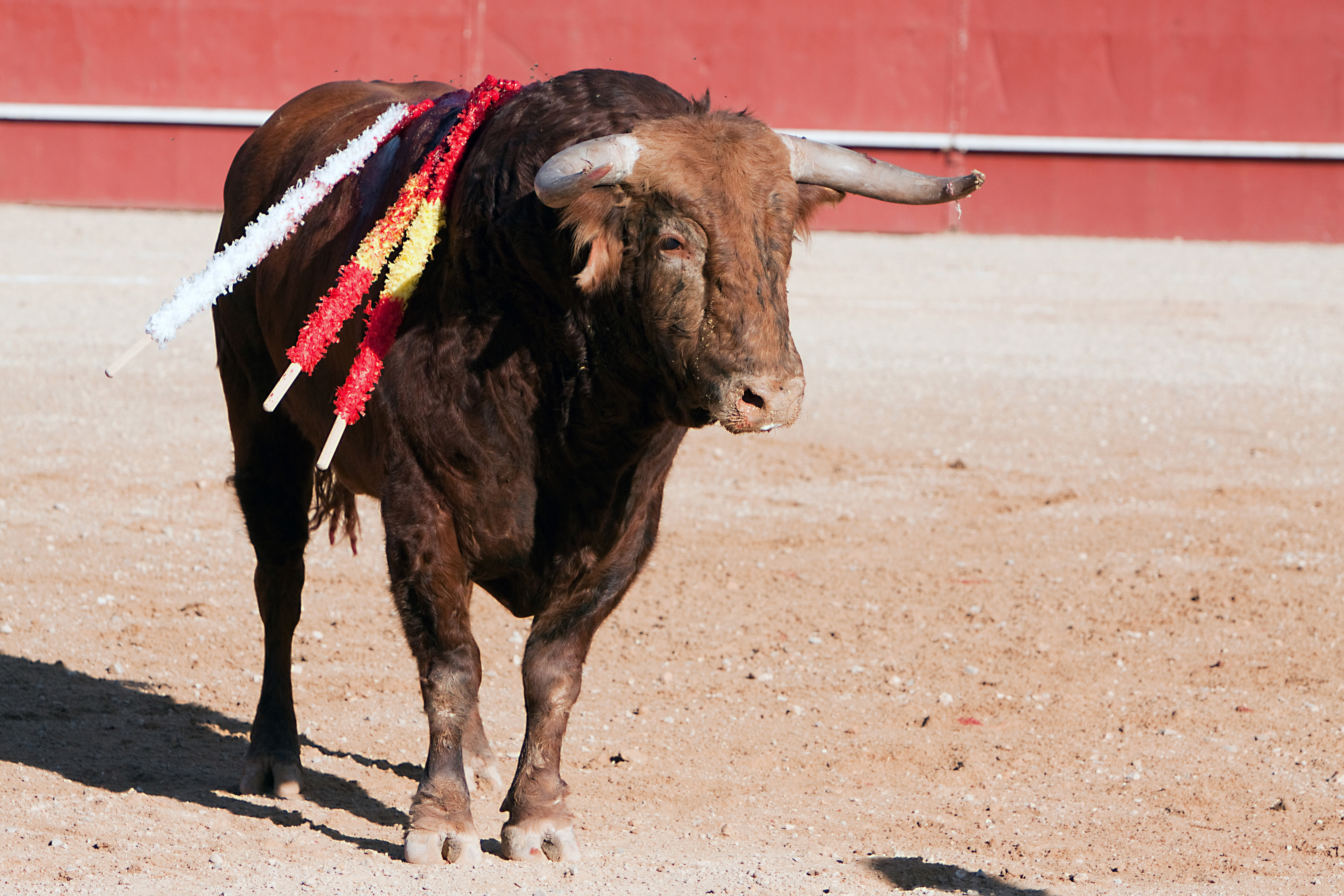
Bullfighting is a cruel form of "entertainment" that is still popular in Europe and Latin America. A bull who has been isolated, starved, beaten, and drugged is forced into an arena to face a matador armed with darts and a kind of sword known as an estoque. It is common for the bull's horns to be shaved down to throw him off balance, or for greasy substances, like petroleum jelly, to be rubbed into his eyes to impair his vision. Bulls are usually fed salt before fights so they will drink more water and be bloated and sluggish in the ring, and are often beaten in the kidneys before a fight.
The bull is stabbed and abused with the help of a picador — a bullfighter on horseback — for an hour or so until the animal is so bloody and exhausted that he can barely stand. At this point bulls usually try to crawl away or collapse but to no avail. In the final act, the matador attempts to stab the bull in the heart with his sword, but this usually does not cause him to die instantly. Often the bull is struck in the lungs instead, causing him to cough blood and suffer. If the bull does not die quickly, the matador pierces his internal organs, and sometimes his spinal cord, to make the bull drop. The bull can still be fully conscious, but unable to move.
Once the bull is down, alive or not, his ears and tail are cut off and he is dragged around the ring for the audience to see and applaud. If this doesn't kill him, the bull is finally murdered.
Films and Television
Though some movies now use computer-generated imaging (CGI) and animatronics instead of live animals, many movies and television shows still use real animals.
Animals have been abused on television and movie sets since the beginning of motion picture entertainment. Some of the most famous cases of animal cruelty come from older films like "Ben-Hur" from the 1950s and "Heaven's Gate" in the 1980s, which involved cockfights, blowing up horses, cutting cattle, and decapitating chickens.
Newer releases like "The Hobbit", "Pirates of the Caribbean: The Curse of the Black Pearl", and "A Dog's Purpose" have also been accused of animal cruelty.
A video released by TMZ apparently shows a terrified German Shepherd being thrown into turbulent water during the filming of "A Dog's Purpose," and eventually sinking under the waves. This video raised quite a bit of controversy. Some believe the video was manipulated into making the situation seem worse than it was, and others are furious that a dog would be put in harm's way to produce a movie, especially one about loving dogs. Either way, it is clear to see that the dog did not want to go into the water.
How far will humans go to get the shot if they are willing to put man's best friend in harm's way?
Marine Parks
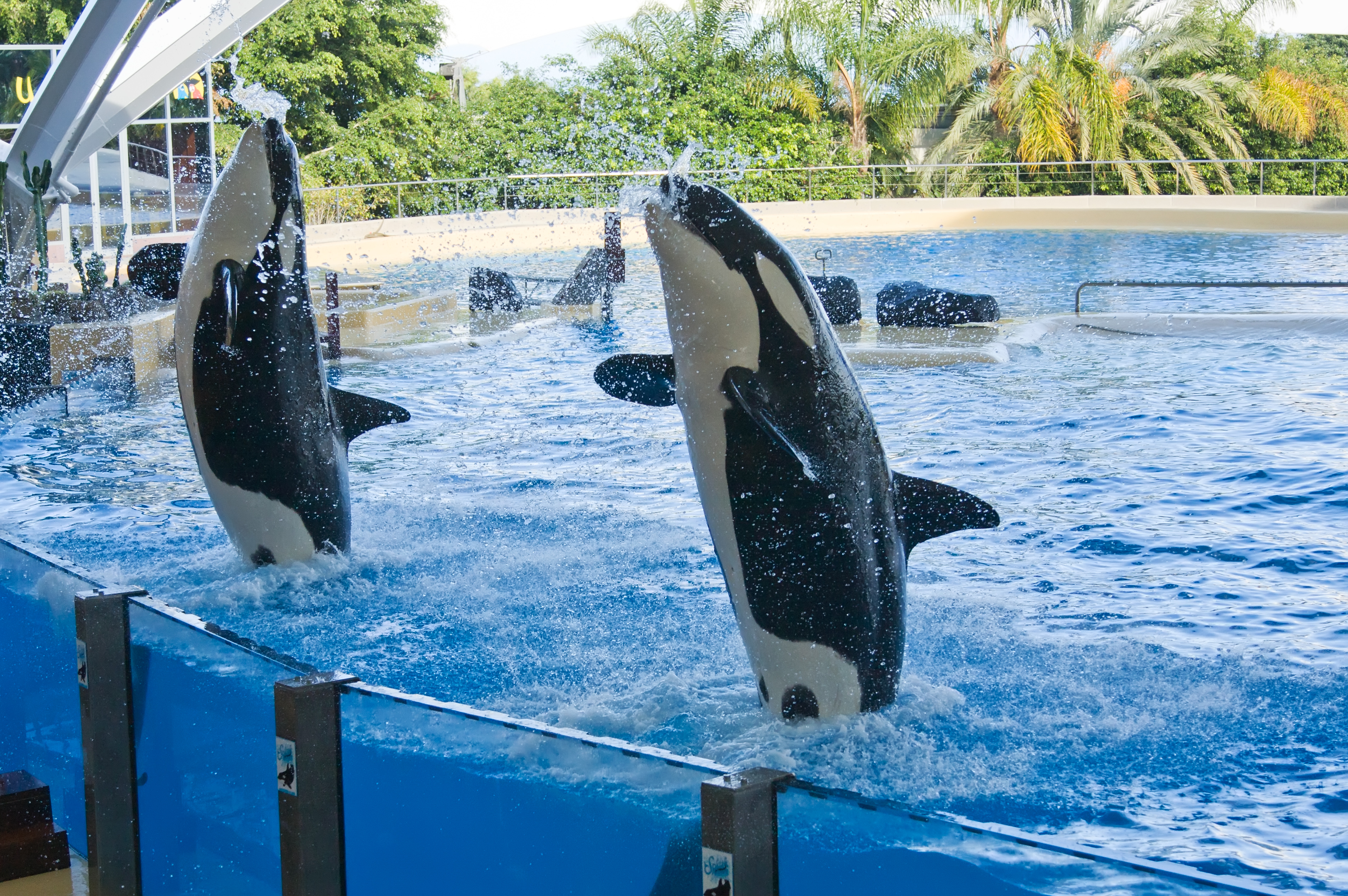
Marine parks like SeaWorld cause physical and psychological damage to the animals held captive within them.
In some parts of the world, marine animals are still taken from the wild and kept in enclosures for people to see. Wild whales and dolphins can swim up to one hundred miles in one day and dive hundreds of meters with their pods, but in captivity, they are kept in tanks where they can only swim a few strokes before hitting a wall. Most marine mammals spend only 10 to 20 percent of their day near the water's surface in the wild, but inside marine parks, they are forced to spend most of their day performing in shallow water or above the surface. This causes cataracts and other eye issues in whales and dolphins.
Signs of severe psychological distress are often found in captive marine life. They will grind their teeth on the tank walls, show signs of aggression, self-harm, and be driven into psychotic episodes. A former SeaWorld employee stated that orcas are fed a concoction of drugs including antipsychotics and benzodiazepines to reduce aggression and anxiety in their unnatural environments.
Though marine parks in America are starting to implement higher standards for their animals (thanks to pressure from activists), new marine parks are still popping up around the world. China is a hub for new marine park developments, and many of their animals are acquired from the wild, often illegally. Since 2014 nearly one thousand cetaceans — whales, dolphins, or porpoises — have been captured in the wild for Chinese marine parks.
Marine parks claim to be educational places for children to learn, but there is a much darker truth they keep hidden.
Animal Entertainment Alternatives
There are plenty of ways to enjoy mystifying performances without causing harm or distress to animals. Technology has advanced, performers have gotten creative, and new approaches to conservation exist.
Holograms
Holographic circuses are programmable, entertaining, and do not harm animals in any way. Families can still enjoy dazzling sights together without supporting industries that thrive on the confinement or abuse of animals.
Holograms will only get better over time, so the future of holographic entertainment is bright.
Animatronics
Walt Disney was the first to popularize animatronics back in the 1960s, inspired by a mechanical singing bird. Since then theme parks, movies, and even restaurants like Chuck E Cheese have used animatronics to entertain their customers.
Imagineers from Disney created the Dolphin Robotic Unit, DRU, which was the first animatronic dolphin introduced to the public. DRU's pilot phase started in 1999 and shocked everyone with how life-like it was.
At first glance, subjects could not tell DRU was not a real dolphin. Its mannerisms were nearly identical to a real dolphin's.
Popular movies like "Free Willy", "Jurassic Park", "Jaws", and "ET" used animatronics and were incredibly successful, showing that there is no need to use real animals to make a great movie. Using animatronic animals has many benefits, seeing as animatronics are programmable and do not require breaks as a real animal would. Animatronic technology continues to improve, so no animals should be harmed in the making of any movie.
Cirque Du Soleil
Circus-style shows can still be entertaining without animal acts. Cirque Du Soleil is wildly successful without the use of real animals. Instead, humans power lifelike animal props that move in similar ways to the animals they mimic.
They use bright colors, creative stage props, and acrobatic artists to dazzle the crowd. Cirque Du Soleil shows can be found around the world and will continue to grow more popular as people start to recognize the abuse happening within circuses.
Safari-Style Zoos
Since animals kept in captivity have a low chance of surviving in the wild, we must find alternatives to small enclosures and the lack of natural environments. Some animal attractions call themselves wildlife preserves or safari parks but treat the animals poorly. It is important to do some research before attending. Reputable safari parks are more natural alternatives to captivity that allow animals to exhibit instinctive behaviors without cages or glass walls. Kruger National Park in South Africa spreads over 7,000 miles and is divided into different ecozones to keep the animals as wild as possible.
Though it would be best if animals were not bred into captivity at all, safari parks are a good alternative. These parks release animals into natural habitats while monitoring them and keeping them safe.
How Can We Help?
There are plenty of ways to help animals trapped within the entertainment sector. One of the simplest ways is to stop supporting the industries that exploit animals.
Do not attend circuses, races, parks, or any other activities that harm animals.
Another simple action you can take from the comfort of your own home is to sign petitions and share information on social media. If enough people sign petitions and start talking about the horrors within these industries, business owners will be more likely to change their ways.
If you want to take a more hands-on approach, you can join or conduct protests against these establishments to raise awareness.
What's Next
Humans have been fascinated with animals for thousands of years, but that does not mean we should hold them captive so we can observe them or watch them perform stunts.
Fortunately, people are starting to see through the lies they have been told by the industries that exploit animals for profit. Cities, states, and countries around the world are banning the use of animals in entertainment. Even in places like Mexico City, where animal entertainment is ingrained in the culture, people are starting to move toward cruelty-free alternatives.
As more information is released about the perils facing animals within the entertainment sector, more people will look for alternatives. We live in a technological age that is ever progressing and improving, and animals are no longer needed in movies, circuses, bull riding, or any other forms of entertainment.
It is time to keep wild animals in the wild.
Drawing Animals and People From Life
Source: https://sentientmedia.org/animals-in-entertainment/
0 Response to "Drawing Animals and People From Life"
Post a Comment